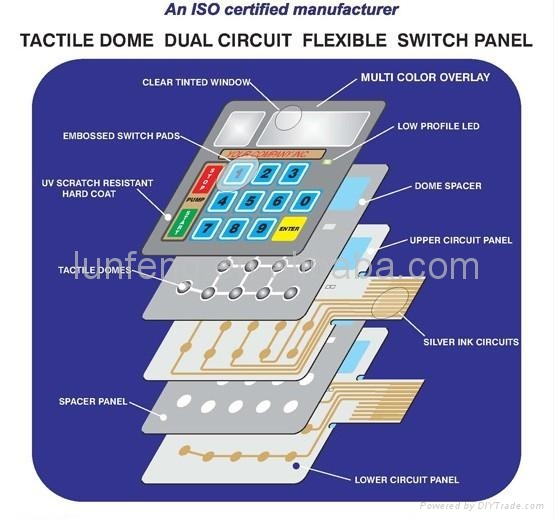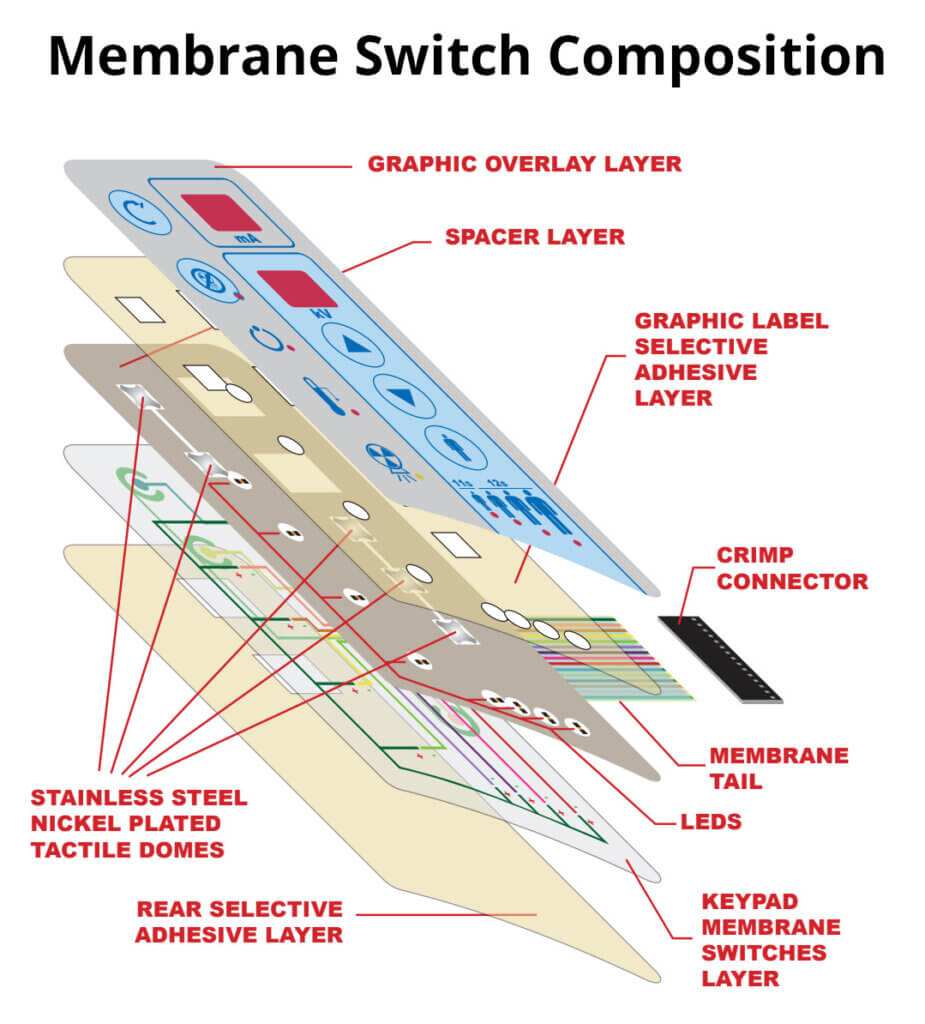How Membrane Switch Technology is Revolutionizing User Interfaces
How Membrane Switch Technology is Revolutionizing User Interfaces
Blog Article
Recognizing Membrane Layer Switches Over: The Key to Trusted and long lasting Controls

What Are Membrane Layer Buttons?
Membrane switches are a sophisticated option in the world of customer interface modern technology, incorporating functionality and style effortlessly. These tools function as a user interface in between customers and electronic systems, incorporating a number of components into a small format. Normally constructed from adaptable, slim layers of products, membrane switches are created to react to touch, enabling individuals to communicate with equipment and digital tools properly.
The main components of a membrane layer button include a printed circuit layer, visuals overlay, and a spacer layer that stops unplanned activation. The graphic overlay can be tailored to show brand name identity or individual preferences, boosting aesthetic appeals while making sure functionality. Membrane layer switches are commonly made use of in numerous applications, consisting of medical tools, customer electronics, and commercial tools, owing to their toughness and resistance to ecological variables such as dampness and dust.
Among the essential benefits of membrane layer buttons is their capability to hold up against wear and tear, making them optimal for high-traffic atmospheres. In addition, they are lightweight and need very little room, enabling cutting-edge layouts in product development. Overall, membrane layer switches represent a practical and effective selection for contemporary electronic user interfaces, weding innovation with user-centric style principles.
Exactly How Membrane Switches Work
The procedure of membrane changes joints on a straightforward yet effective system that translates individual input into digital signals. When an individual presses the switch, the top layer flaws, enabling a conductive component in the circuit layer to make call with an equivalent conductive pad on the underside of the graphic overlay.
The style of membrane layer switches can vary, however they frequently integrate domes or responsive components to provide comments to the user, enhancing the total experience - membrane switch. The materials made use of in membrane layer switches, such as polyester or polycarbonate, add to their sturdiness and resistance to ecological variables, consisting of dampness and dirt. The printed circuits are normally enveloped, which secures them from wear and tear over time.
Advantages of Membrane Switches

Additionally, membrane switches are understood for their resilience. Built from robust materials, they are resistant to dust, wetness, and physical wear, which dramatically expands their life-span contrasted to traditional mechanical switches. This resilience makes them particularly suitable for high-traffic environments and applications requiring longevity.
Another significant benefit is the ease of cleansing and upkeep. The smooth surface area of membrane layer switches over lessens dirt build-up and is typically unsusceptible spills, making them excellent for setups that need regular sanitization.
Additionally, membrane switches provide blog a streamlined account, bring about a thinner style that can be integrated into various devices without adding mass. This attribute not only enhances the aesthetic allure yet likewise adds to an extra ergonomic product design.
Applications of Membrane Switches
Flexible and user-friendly, membrane layer switches locate applications across a variety of markets, consisting of medical devices, consumer electronics, and industrial equipment. In the clinical area, these switches are essential to devices such as analysis devices, client surveillance systems, and infusion pumps, where integrity and convenience of cleansing are vital. Their ability to maintain and hold up against severe settings performance makes them perfect for such applications.

In consumer electronic devices, membrane buttons are made use of in products like microwaves, cleaning machines, and push-button controls - membrane switch. Their sleek style enables intuitive interface, enhancing the overall customer experience while providing longevity and resistance to deterioration
Commercial equipment likewise profits from membrane buttons, particularly in control panels for machinery and automation systems. These buttons provide defense versus dust and wetness, making certain consistent efficiency in challenging atmospheres. Their customizable features allow producers to tailor them to certain functional demands, boosting efficiency and functionality.
Choosing the Right Membrane Change
When choosing a membrane layer button, it is important to take into consideration numerous variables that affect performance and suitability for certain applications. The main considerations include environmental problems, responsive comments, longevity, and layout requirements.
First, examine the operating atmosphere; switches exposed to dampness, chemicals, or severe temperatures require specific products to ensure durability and performance. Next, evaluate the demand for tactile feedback. Relying on customer interaction, some applications might profit from a tactile response to validate activation, while others may prefer a non-tactile layout for visual reasons.
Longevity is one more vital factor; membrane layer switches need to be created to endure constant use, impacts, and abrasion. Make certain the picked button can endure the anticipated lifecycle, specifically in high-usage situations.

Final Thought
Finally, membrane layer switches over serve as vital components in the layout of sturdy and trustworthy control systems throughout different industries. Their portable style, combined with durable construction and personalized functions, enhances customer interaction while making certain durability sought after settings. The flexibility of membrane layer switches permits for tailored remedies that satisfy details check that operational demands, reinforcing their value in modern innovation. As industries proceed to evolve, the value of integrating efficient membrane layer switch options can not be overstated.
Membrane switches represent an essential aspect of modern interface style, mixing capability with strength in numerous applications.Membrane layer buttons are a sophisticated service in the realm of individual interface modern technology, integrating capability and layout flawlessly. Generally constructed from flexible, thin layers of materials, membrane switches are designed to respond to touch, enabling users to interact with machinery and digital tools effectively.
The layout of membrane layer buttons can differ, however they commonly include domes or responsive aspects to supply comments to the individual, enhancing the overall experience.In conclusion, you can try this out membrane layer switches over serve as vital elements in the design of reliable and durable control systems throughout different markets.
Report this page